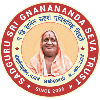Medical Lab Technician
Program Objectives:
Medical Laboratory Technology, also known as clinical laboratory science, is an allied health/paramedical profession, which is concerned with the diagnosis, treatment and prevention of disease through the use of clinical laboratory tests. Doctors rely on laboratory technologies to detect, diagnose and treat diseases. The programme covers the basics of preclinical subjects such as Biochemistry, Pathology, Microbiology and Blood Banking. Medical Laboratory Technologists (MLT) do these tests by analyzing body fluids, tissues, blood typing, microorganism screening, chemical analyses, Cell counts of human body etc.
Job Prospects:
After the completion of DMLT, you will find a challenging career in a hospital, minor emergency centers, private laboratory, blood donor centers, doctor’s office or clinics. A technician can become a technologist through further education and work experience.
Paper- 1: Fundamentals of Medical Lab Technology
Unit-1
Basic laboratory principles– Organization of clinical laboratory – Safety measures – Chemical, fire & Electrical – Lab Technician Duties and Responsibilities – Professionalism & Ethics in laboratory workers, Modern Laboratory set up – Clinic borne infection and personnel hygiene
Unit-2
Basic Laboratory Equipments– Microscopy- Resolution, Magnification & Contrast, Light Microscopy-types, Electron Microscopy, Incubator, Hot Air Oven, Laminar Air flow Chamber, Water Bath –Anaerobic Jar, Centrifuge, Autoclave, Haemocytometer, Flame Photometer, Microtome – Glassware –Description of Glassware, its use, handling and care.
Unit-3
Preparation of Reagents -Buffer and pH – Preparation of Reagents : Normal, Per cent and Molar solutions -Normal saline, Clinical Laboratory records- -Quality control: Accuracy, Precision, and Reference values, use of chemicals and their interactions, danger signs, production techniques, and disposal methods.
Unit-4
Basic Clinical Chemistry– Phlebotomy- Types of blood specimens for chemical analysescriteria for specimen acceptability, specimen transport, processing and storage. Hospital Pointof- care testing.
Unit-5
Automation in Clinical Laboratory – Types of analyzers -Semi-auto analyzer -Batch analyzer – Random Access autoanalyzers. Steps in the automated systems – Responsibilities of a technician in the maintenance of the analyzers.
References:
- Fischbach, 2005. Manual of lab and diagnostic tests, Lippincott Williams Wilkins, New York.
- Gradwohls, 2000. Clinical laboratory methods and diagnosis. (ed) Ales C. Sonnenwirth and leonard jarret, M.D.B.I., New Delhi.
- J Ochei and Kolhatkar, 2002. Medical laboratory science theory and practice, Tata McGraw-Hill, New Delhi.
- Kanai L. Mukherjee, 2007, Medical laboratory technology Vol.1.Tata McGraw Hill.
Paper- 2: Anatomy and Physiology
Human Anatomy : Unit-1
- Anatomy of Nervous system. Central Nervous system : Spinal cord, Anatomy, Functions, Meninges.
- Anatomy of Circulatory System Heart: Size, Location, Coverings, Chambers, Names of arteries and veins
- Anatomy of the Respiratory system Organs of the Respiratory system – Pleurae and Lungs – Brief knowledge of parts and position.
Unit-2
- Anatomy of the Digestive system -Components of digestive system, Mouth , Tongue, Tooth, Salivary glands, Liver, Biliary apparatus, Pancreas – position and their brief functions.
- Anatomy of the excretory system and reproductive system Kidneys – Ureters, Urinary Bladder, Urethra Male Reproductive System – testis, Duct system. Female Reproductive System – Ovaries, Duct system and Accessory glands.
- Anatomy of the Endocrine system Name of the glands and their position, hormones and their
functions – Pituitary, Thyroid, Parathyroid, Adrenal gland and Gonads, Islets of Pancreas.
Human Physiology : Unit-3
- Blood – Composition, properties and function of blood. RBC – Size, Shape, functions, count, physiological variations of RBC count, Haemoglobin – Function, concentration, physiological variations, WBC – Functions, production, Life span, count, Differential count, Platelet – Size, shapes, count, production.
Unit-4
- Digestive System Functions of Digestive system -function of salivary glands, Functions of stomach – gastric juice. Functions of Pancreas, Functions of Liver -Properties, composition and function of Bile, Functions of large intestine.
- Respiratory system – Respiratory Physiology – Transportation of oxygen – forms of transportation, oxygenation of Hb.
Unit-5
- Excretory System – Kidney- Mechanism of urine formation – GFR, Plasma fraction, EFP,
Factors affecting GFR. Properties and composition of normal urine.
References:
Anatomy
- Ester.M. Greishcimer. Physiology and anatomy with Practical Considerations. J.P. Lippin Cott, Philadelphia. Willam Davis. Understanding Human Anatomy and Phsiology, MC Graw Hill.
- Willam’s ( Pter, L) Gray’s Anatomy, 38lfl eds. Churchill Livingstone, 1995.
- T.S. Ranganathan, A text book of Human Anatomy. Fahana, Human Anatomy ( Descriptive and Applied ) Saunder;s & Co., Prism Publishers, Bangalore.
Physiology
- Guyton, Textbook of Physiology. 8lh Eds. Prism Publishers. Bangalore. 1991.
- Chatterjee, Human Physiology, 10th Eds., Medical Allied agency.
- Choudhari, Concise Medical Physiology, 1st, Eds, New Central Books, Calcutta, 1993.
- Ganong ( Willams), Review of Medical Phsiolog>, 18lh eds., Appliton and Lange, 1997.
Paper- 3: Microbiology
Unit-1
Historical introduction – with special reference to the contribution of Louis Pasteur, Joseph Lister, Robert Koch, Edward Jenner and Alexander Fleming; Importance of Microbiology in laboratory medicine.
Unit-2
Observation of micro- organism – Wet preparations, Staining preparations- Simple, Differential, Special staining methods; Anatomy of Bacterial cell; Morphological Classification of bacteria with example
Unit-3
Sterilization and Disinfection-Principles-Methods of Sterilization –Physical methods –Dry heat -Moist heat, Filtration (Membrane & HEPA) -Radiation –Chemical Sterilization -Chemical Agents, Mode of action –Phenol coefficient test- Sterility testing.
Unit-4
Culture & -Media preparation -Solid and Liquid-Types of Media –Crude, Semi-Synthetic, Synthetic, Enriched, Enrichment, Selective, Differential and Special Purpose Media (one eg for each type). Anaerobic culture technique-–Wright’s tube, Roll tube, Mclntost fildes jar method . Pure culture technique –Tube dilution, Pour, Spread, Streak plate.
Unit-5
Bacterial Identification and Antibiotic susceptibility testing, Infections of the respiratory tract, urinary tract, digestive tract and central nervous system- Emerging Infectious diseases. Biological threat agents.
References:
- Mackie and McCartney – Practical Medical Microbiology by J.G.Collee/A.G. Frazer, B.P. Marimion/A.Simmon.
- Textbook of Microbiology by Ananthanarayan,R and Jayaram Panicker.K.
- Pelczer J, R E. C .S John Noel R Krieg, Microbiology: MC Graw Hill Book Company, 1986.
- Prescott L. M; J.H Harley and D. A Klein, Microbiology, C. Brown Publishers, 1993.
- Ronald M. Atlas, Microbiology-Fundamentals and Applications, Macmillan Publishing Company, New York, 1993.
Paper- 4: Clinical Biochemistry
Unit-1
Carbohydrate – absorption, metabolism, Maintenance of blood glucose levels – hormonal influence, Diabetes mellitus Tests involved in carbohydrate metabolism.
Unit-2
Protein – digestion, absorption and metabolism – urea synthesis, Tests involved in protein metabolism. Lipid digestion, absorption and metabolism Tests involved in lipid metabolism.
Unit-3
Renal function tests, Liver function tests, Arterial blood gas analysis
Unit-4
Water, electrolyte and buffer systems – sodium, potassium, chloride, bicarbonate, metabolism and estimation Minerals – calcium, phosphorous, iron, magnesium, copper – metabolism and estimation
Vitamins and enzymes
Unit-5
Biologically important hormones : insulin, glucagons, epinephrine, thyroid, growth hormone, parathyroid, pituitary, steroid hormones
References:
- Clinical Diagnosis by laboratory methods – Todd and Sanford.
- Text book of medical laboratory technology – Praful Godhar.
- Clinical biochemistry – Teitz.
- Practical clinical biochemistry – Harold Varley.
- Harpers illustrated biochemistry – Murray, Granner, Mayes, Rodwell.
Paper- 5: Pathology and Cytology
Unit-1: Clinical pathology
Urine – Composition, collection and preservation, changes in composition of urine in relation to various diseases -Complete urine analysis – physical, chemical – glucose, protein, reducing substances, ketone bodies, blood pigments, bile. Sediments.
Unit-2
Body fluids: Characteristics of Cerebrospinal Fluid. -Synovial fluid -Pleural fluid -Pericardial fluids -Peritoneal fluids-Semen analysis-physical, chemical & microscopic examination, sperm count, motility; Parasitology – Classification and identification of common human parasites. Stool analysis.
Unit-3: Histopathology
Introduction to histopathological techniques- Sample reception and record keeping Specimen fixation and fixatives.
Unit-4: Cytology
Processing of tissue Embedding, Microtomy Frozen section -Mounting and staining -Theory of H & E stain, Stains – AFB, Fite, PAS, PASM, Masson’s trichrome.
Unit-5
Smear preparation of FNAC -Fixation of smears -Pap staining-Fluid cytology –Urine, Sputum, Spinal fluid, Pleural fluid, Scrape or brush cytology, testing biopsy and cytology specimens for cancer.
References:
- Culling – Histopathology techniques.
- Clinical Diagnosis by laboratory methods – Todd and Sanford.
- Practical haematology – Dacie and Lewis.
- Clinical biochemistry – Teitz.
- Practical clinical biochemistry – Harold Varley.
- Harpers illustrated biochemistry – Murray, Granner, Mayes, Rodwell.
Paper- 6: Haematology and Blood Banking
Unit-1:
Basic Hematology– Normal blood cell morphology, Manual red and white blood cell counts, platelets count, preparing and staining a blood smear, white blood cell differential count, Hemoglobin, Microhematocrit.
Unit-2
Principles of automated haematology– Routine biochemistry analysers, Immuno-based analysers, Hematology analysers, Cell counters, Coagulometers, Other hematology apparatus.
Unit-3:
Basic hemostasis– Disorders of hemostatsis, Principles of coagulation testing, Practical aspects of one stage prothrombin time, PTT. Clotting time, clot retraction and clot lysis, tourniquet test. Demonstration – Haemoglobin electrophoresis, acid haemolysis test, Kleihauer preparation.
Unit-4: Cytology
Blood Transfusion -Principal & Practice of blood Transfusion-Blood Transfusion service at District level-Guide lines for the use of Blood, Appropriate use of Blood, screening of donorcompatibility testing, safety, procurement of supplies. Screening donor’s blood for infectious agents -HIV, HCV, HBV, Trepanoma palladium, Plasmodium, HTLV-Bacterially contaminated Blood.
Unit-5
Blood banking -Principles of blood groups and antigen antibody reactions ABO – Rh blood group systems, other red cell antigens and antibodies. Coombs test – investigation of transfusion reaction and haemolytic disease of the new born, antibody detection and titration.
References:
- Ramanic Sood, Laboratory Technology (Methods and interpretation) 4th Ed. J.P. Bros, New Delhi.
- Satish Gupta Short text book of Medical Laboratory for technician J.P. Bros, New Delhi.
- Shirley Mitchell Lewis, Barbara J. Bain, Imelda Bates(2006) Dacie And Lewis Practical Haematology, 10th Ed, Churchill Livingstone/Elsevier.
- Barbara A. Brown(2008) Hematology: principles and procedures 6th Ed Lea & Febiger.
- Bernadette F. Rodak, George A. Fritsma, Kathryn Doig(2007) Hematology: Clinical Principles and Applications 3rd Ed, Elsevier Health Sciences.
Practical- 1
(Lab in Fundamentals & Microbiology)
- Responsibilities of a technician in the maintenance of the analyzers.
- Use and care of microscopes.
- Measurement of microbes by micrometry.
- Simple staining methods and gram stains.
- Special staining methods –capsule, spore, acid fast, Metachromatic etc.,
- Tests for motility in bacteria.
- Using of autoclave hot air oven, other common laboratory equipment etc.
- Disinfection practices in laboratory and wards.
- Techniques of cultivation of bacteria.
- Isolation of bacteria from clinical specimens.
- Biochemical testing –Catalase, oxidase, citrate, urease, TSI,Carbohydrate fermentation,MR VP, Indole
- Antibiotic sensitivity test.
- Lactophenol Cotton blue staining.
Practical- 2
(Lab in Biochemistry, Pathology & Haematology)
- Estimation of blood glucose.
- Estimation of creatinine.
- Estimation of cholesterol.
- Estimation of uric acid.
- Estimation of total protein, albumin, globulin.
- Estimation of bilirubin – Direct, indirect.
- Examination of stool for parasites.
- Processing, Fixation, Embedding, Microtomy -Stains – Haematoxylin & Eosin.
- Pap staining.
- Platelet count.
- Bleeding time, clotting time.
- Blood grouping.
- Coomb’s test.
- Estimation of haemoglobin.
- RBC count.
- Total WBC count.
- Differential WBC count.

